Author: Yan Xie Panpan
Recently, as the gate of the Deshou Palace Ruins Museum of the Southern Song Dynasty opened, the “looking” of the Southern Song Dynasty, which had been sleeping for nearly a thousand years, became clear in an instant.
Deshou Palace is an important royal palace and garden building located in the capital Lin’an (now Hangzhou, Zhejiang) during the Southern Song Dynasty. Song Gaozong and Babaylan Song Xiaozong Cinema abdicated and lived here.
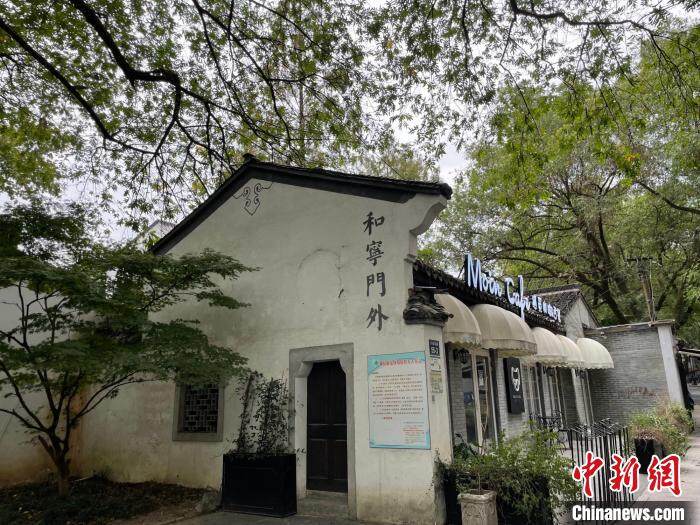
The intersection of the foot of Fenghuang Mountain in Hangzhou, Hening Gate is the gate of the Da Nei Beigong of the Southern Song Dynasty. Strictly photographed
In addition to Deshou Palace, how many other Southern Song Dynasty can you see in Hangzhou? The author recently “looked at the Southern Song Dynasty” with Du Zhengxian, director of the Department of Archaeology of Zhejiang University Urban College.
Da Nei
An inconspicuous public toilet on the foot of Fenghuang Mountain in Hangzhou. Du Zhengxian said that this was the area where Hening Gate, the imperial city of Da Nei, was located in the southern Song Dynasty.
Du Zhengxian’s basis is that the site of the Da Nei Beigong Wall was found opposite the toilet and behind a dilapidated private house at the foot of Phoenix Mountain. The Hening Gate and the Beigong Wall should be on the same line.
Now, the foot of the Tianfenghuang Mountain Road is probably the passageway to enter and exit the Da Nei at that time. The intersection of the two is the current public toilet.
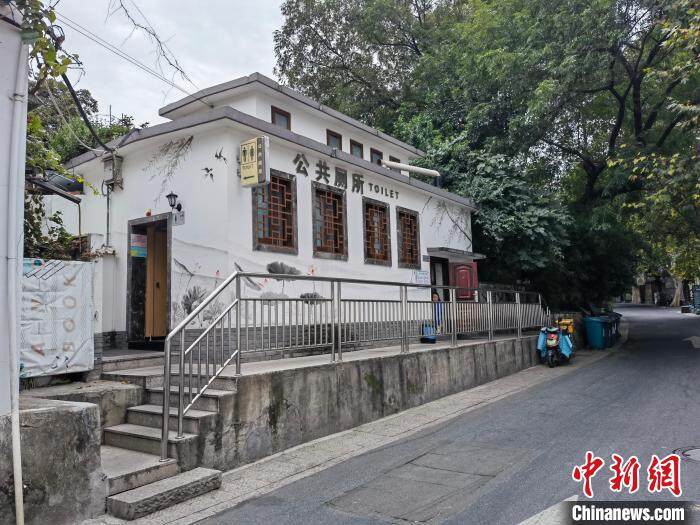
The public toilet on the foot of Fenghuang Mountain in Hangzhou is supposed to be the area where Hening Gate is located in the Da Nei Beigong Gate of the Southern Song Dynasty. Xie Pan CinemaPhoto
The author looked at the public toilet. It was hard to imagine that the prime minister Qin Hui and the famous general Yue Fei of the Southern Song Dynasty went to court from here.
The ruins of the Southern Song Dynasty imperial city are located on the eastern foot of the Phoenix Mountain in the south of Hangzhou. experienceAfter more than 800 years of wind and rain, the Fenghuang Mountains in the past had long become the home of ordinary people, and many units have also settled here.
The author and Du Zhengxian stood at the intersection of the foot of Phoenix Mountain. The prosperity of the past was no longer visible in front of him. They only saw the exterior wall of a cafe with the words “outside Hening Gate” written on it.
The Fenghuang Yuyuan Art Base, now located at No. 7, Fenghuang Mountain Foothing Road, is a provincial cultural industry park in Zhejiang. Walking in the park, you can see bakery with different styles, handicraft workshops with log characteristics, and crowd-creation spaces gathered with new designers.
These designers may not necessarily know that this is the area where the Daqing Hall of the “Golden Palace” of Danei is located.
Yu Street
When leaving Hening Gate, it is the Southern Song Dynasty Yu Street. Starting from Hening Gate, the Yu Street passes through Taimiao, Chaotian Gate, Zhong’an Bridge, and then turns west to Komiks through Gongyuan Road, the Ministry of Rites, and passes through Xinzhuang Bridge, and finally arrives at Jingling Palace. The crisscrossing roads are centered on the Imperial Street, forming a well-connected transportation network, which is the central axis of Lin’an City in the Southern Song Dynasty.
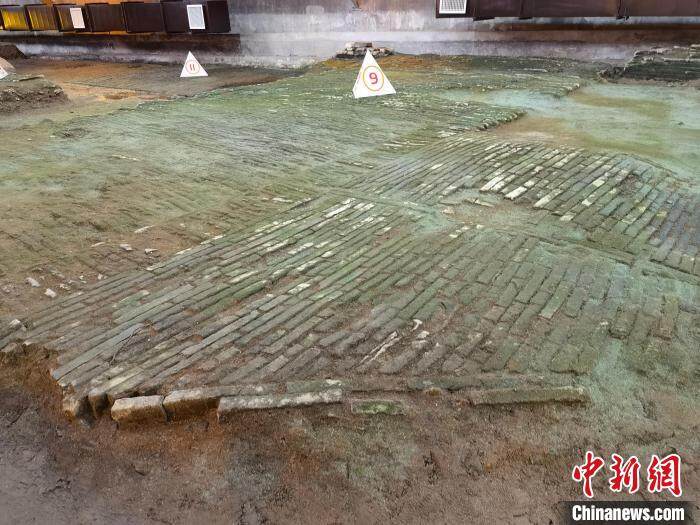
Southern Song Dynasty Imperial Street displayed in the Southern Song Dynasty ruins exhibition hall, Xie Panpan photographed
In 2003, in order to cooperate with the road construction of the east connection of the Wansongling Tunnel in Hangzhou (Yanguan Lane Section), the Hangzhou Cultural Relics and Archaeology Institute conducted rescue archaeological excavations on Yanguan Lane, and discovered important relics such as Yujie, Yujie Bridge and Pier Foundation in the Southern Song Dynasty.
The Southern Song Dynasty ruins exhibition hall built on this basis can truly see the most prosperous imperial street pattern in the city of Lin’an, Song Dynasty.
The author saw in the exhibition hall, Komiks that Yu Street was paved with fragrant cake bricks, divided into the main road and the auxiliary road. Du Zhengxian said that the biggest achievement in the archaeological archaeology of Yanguanxiang Yujie is to clarify the width of Yujie, about 20 meters left and right.ttps://funnybookish.com/”>Komiks, which fully revealed the full picture of Yujie, and was therefore selected as one of the top ten archaeological discoveries in the country that year.
It is worth mentioning that at that time, Hangzhou City decided to “open the tunnel and protect the Yujie”. Finally, it adjusted the original tunnel plan and built the Southern Song Dynasty ruins exhibition hall based on the site. Fish and bear pawsCinema Pavilion, Fish and Bear PawsBabaylan can be obtained both.
Taimiao
The Southern Song Taimiao is a ancestral temple for the emperors of the Southern Song Dynasty to worship the former emperors, second only to the imperial city. Unfortunately, the Taimiao was destroyed in the war during the Yuan Dynasty.
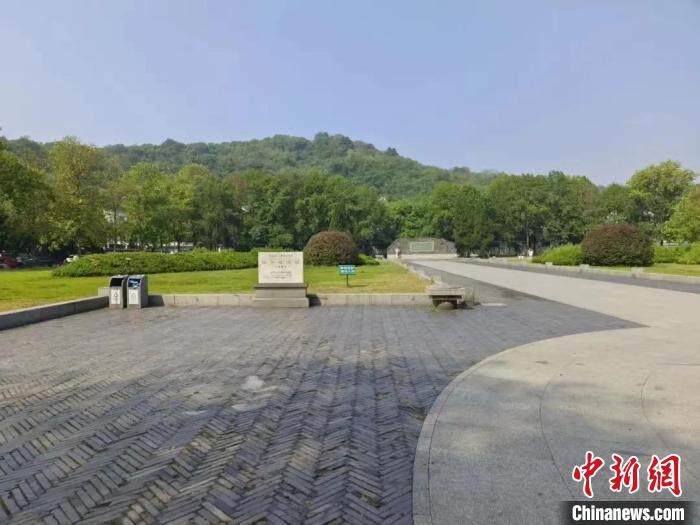
Southern Song Taimiao Ruins Park Photo provided by the Culture, Radio, Tourism and Sports Bureau of Shangcheng District, Hangzhou City
Taimiao is in Hangzhou href=”https://funnybookish.com/”>BabaylanEastern foot of Ziyang Mountain, in 1995, Du Zhengxian, who works in the Hangzhou Cultural Relics Komiks Archaeology Institute, accidentally discovered that old houses in this area are being demolished. It turned out that the developer was preparing to build 12 houses in Ziyang Community.
So, a rescue archaeological excavation began.
At the beginning, archaeologists thought CinemaThe capital of the Southern Song Dynasty was in a hurry, and the construction of the Taimiao may also be relatively hasty, so the scale should not be large.

The head of the stone figurine unearthed from the Taimiao site of the Southern Song Dynasty was photographed by Xie Panpan
But with the excavation of Babaylan, BabaylanDiscovered the eastern wall and east gate of the Taimiao site of the Southern Song Dynasty.Komiks site and large rammed earth foundation, with an area of about 1,000 square meters. Although archaeological excavations have not yet revealed the entire picture of the Taimiao, the scale and momentum of the Taimiao of the Southern Song Dynasty and the superb level of the construction technology have been seen from it.
Later, Hangzhou City did not hesitate to invest more than 80 million yuan in the early stage to stop building residential communities in the site, and built the Southern Song Taimiao Ruins Park, providing citizens with an elegant environment and a strong cultural atmosphere.
The Southern Song Dynasty Taimiao Ruins Park has now become a check-in place for citizens and tourists to sing and dance, dance swords and box, and it is a great pleasure. Emperor Gaozong of Song must have unimaginable that the solemn and solemn Taimiao of the Southern Song Dynasty was so “fireworks”.
Du Zhengxian said that the protection of Taimiao ruins in the Southern Song Dynasty is a successful case of the protection of urban archaeological sites in China, with a great impact on Hangzhou and the whole country, so it was rated as one of the top ten new archaeological discoveries in China in 1995. Cinema
Qinghe County Prince’s Mansion
History of Song Dynasty·Gaozong Ji” records: “The second year of ShaoxingBabaylanOctober 11, and I was lucky to Zhang Jundi.” In the winter of 1151, Song Gaozong went to Zhang Jun’s house for a meal.
Zhang Jun, Yue Fei, Han Shizhong and Liu Guangshi were named the leader of the four generals of the Southern Song Dynasty, and were named the Prince of Qinghe County. However, Zhang Jun later conspired to murder Yue Fei with Qin Hui. Now, among the four ugliness who are kneeling in Yuewang Temple in Hangzhou, there is Zhang Jun.
From the early years of the Southern Song Dynasty to the fall of the Song Dynasty, it lasted for more than 150 years. The Qinghe County Prince’s Mansion of Zhang Jun’s family was the “first house” in the capital of the Southern Song Dynasty.
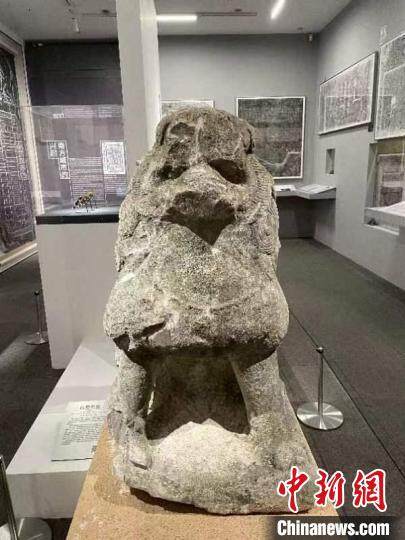
The stone lion of the Prince’s Mansion of Qinghe County Strictly photographed
The royal palace of Zhang Jun, the prince’s mansion of Qinghe County, was awarded the title in the alleys on the eastern foot of Wushan Mountain in Lin’an City, roughly in the area of today’s Wushan Mall. Later, the streets and alleys where the royal mansion is located were called Qinghefang, and Hefang Street, a famous pedestrian street in Hangzhou, is therefore named.
From January 2001 to April 2002, the Hangzhou Cultural Relics and Archaeology Institute where Du Zhengxian was located conducted rescue archaeological excavations on the Wushan Mall construction site, and discovered three patios, two house sites and two intervening roads in the Southern Song Dynasty., sewers and undergrooves and Komiks remains.
The exquisitely patterned building components such as tile and chubby, large stone lions, stone bases engraved with auspicious beasts, and relics such as stone balls used by soldiers for drilling were unearthed on the site. Compared with the “Beijing Map” in the “Xianchun Lin’an Zhi” of the Southern Song Dynasty, it is judged that this place is roughly “Qinghe County Prince’s Mansion”. More than 800 years later, the stone lion from Zhang Jun’s family is also on display in the exhibition “Walking among the Mountains and Rivers – Hangzhou Lin’an City under the Perspective of the Southern Song Dynasty” recently was also on display.
It is almost intact, and I look at the past citizens who are watching the exhibition, just like when I saw Emperor Gaozong of Song and Qin Hui attending the banquet at the gate of the Prince’s Mansion of Zhang Junqinghe County.